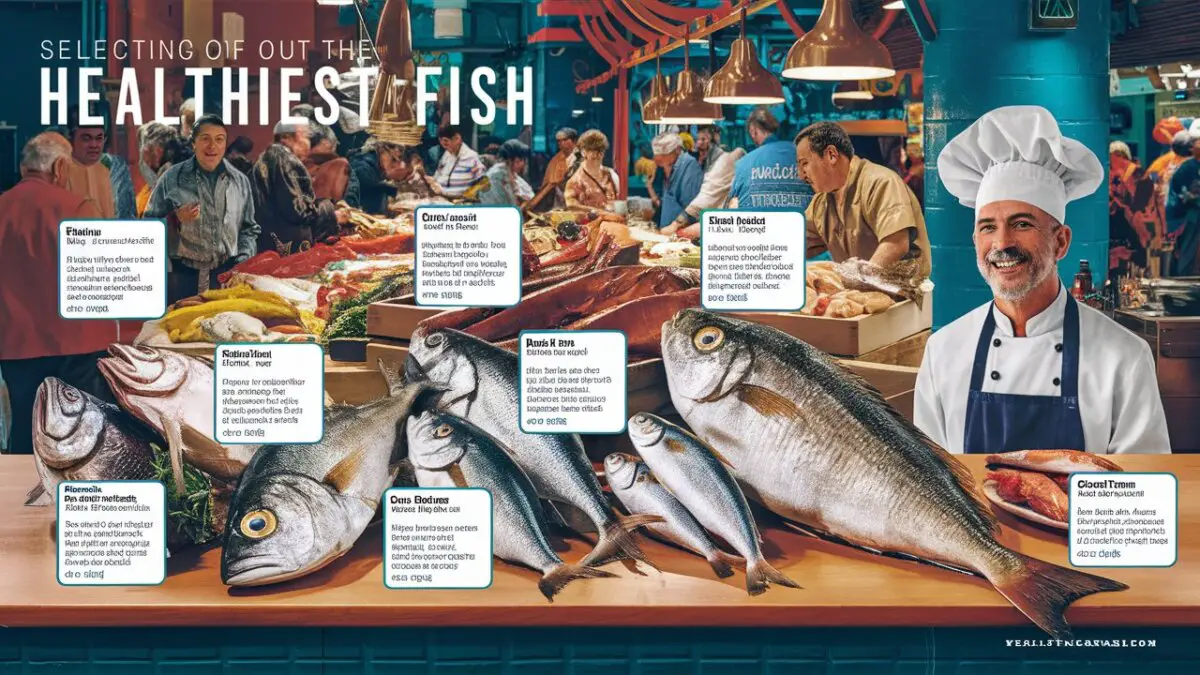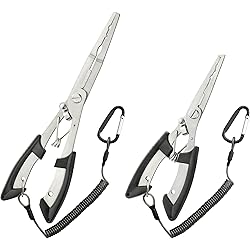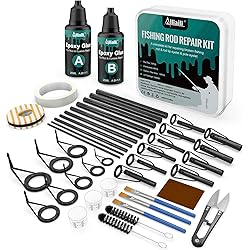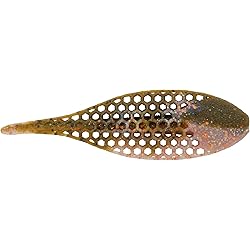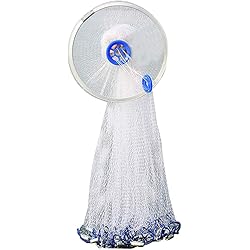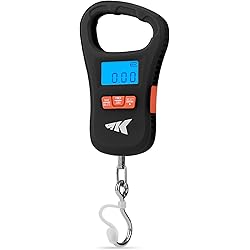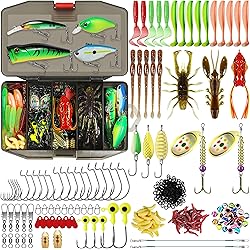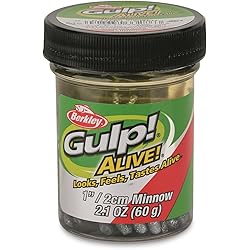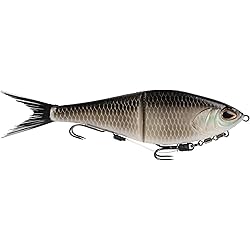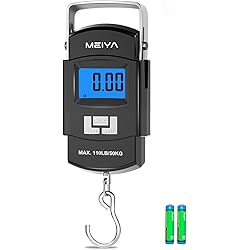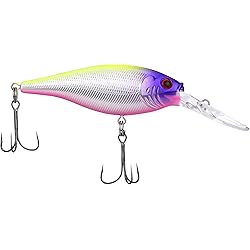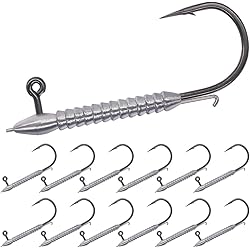How to Select the Healthiest Fish for You, Eating fish is one of the healthiest dietary decisions you can make for your overall health.
Fish, which is high in vital nutrients, has several health advantages, such as better heart, brain, and bone health.
Choosing the healthiest fish can be difficult because there are many options.
This all-inclusive book will offer dietary guidance and pointers on how to choose the healthiest fish, so you can maximize the advantages and minimize the hazards.

1. Understanding the Nutritional Benefits of Fish
Fish is an important part of a balanced diet since it is a nutrient-dense food source. Here’s a breakdown of the main nutrients found in fish and their health benefits:
Omega 3 Supplement – Omega-3 Fish Oil 2000mg
- Protein: Fish are abundant in high-quality protein, which is essential for tissue repair, muscular growth, and general development. Protein is also essential for the production of hormones, enzymes, and a strong immune system.
- Omega-3 Fatty Acids: Omega-3 fatty acids are abundant in fish, especially fatty fish like trout, salmon, mackerel, and sardines (EPA and DHA). These essential fats are critical for proper brain function, as well as for decreasing inflammation and the risk of developing long-term conditions like arthritis and heart disease.
- Vitamins: Fish is a great source of several vitamins, including:
- Vitamin D: Important for bone health and immune function.
- Vitamin B12: Essential for nerve function and the production of red blood cells.
- Vitamin A: Crucial for vision, immune function, and skin health.
- Minerals: Fish provides important minerals such as:
- Iodine: Vital for thyroid function and metabolic regulation.
- Selenium: An antioxidant that helps protect cells from damage.
- Zinc: Essential for immune health and wound healing.
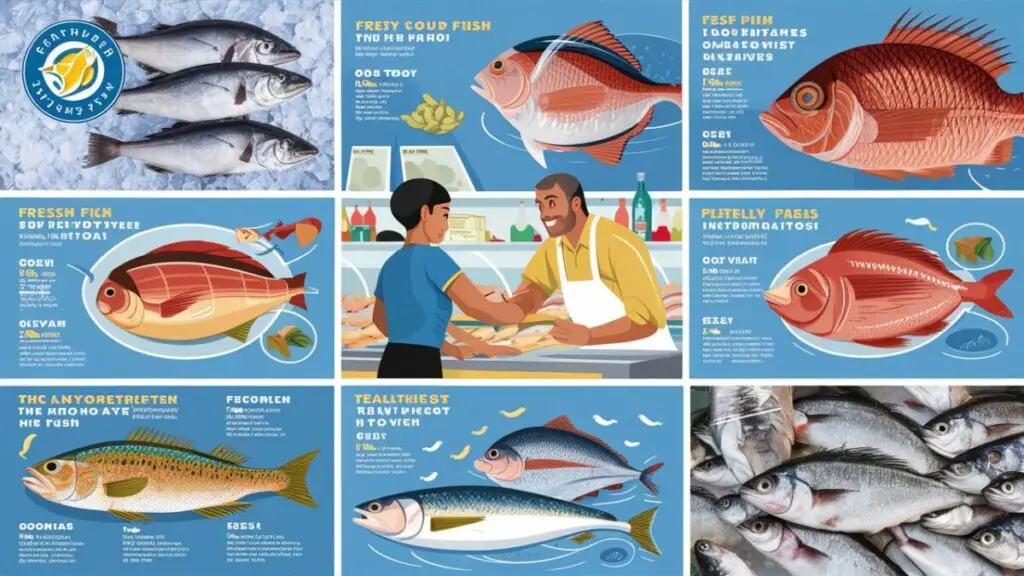
2. Types of Fish and Their Health Benefits
Not all fish have the same nutritional makeup. Below is a list of the healthiest fish to include in your diet, along with some of their unique advantages:
- Salmon: Rich in omega-3 fatty acids, vitamin D, and selenium, salmon is one of the best choices for heart health, brain function, and overall well-being. It also contains astaxanthin, a powerful antioxidant.
- Mackerel: Another fatty fish, mackerel is high in omega-3s and provides a good source of vitamin B12, which is important for nerve health. It is also rich in vitamin D and selenium.
- Sardines: These small fish are packed with nutrients, including omega-3s, vitamin D, calcium, and selenium, making them great for bone health and overall nutrition. They are also low in mercury.
- Trout: High in omega-3 fatty acids and protein, trout is an excellent choice for heart health and muscle maintenance. It is also a good source of vitamin B12 and niacin.
- Tuna: A versatile fish that is rich in protein and omega-3s, tuna is great for heart health and cognitive function. However, it is important to choose varieties with lower mercury levels, such as skipjack or canned light tuna.
- Cod: A lean fish that provides a good source of protein, vitamin B12, and iodine, cod is a healthy option for those looking to manage their weight. It is also low in mercury.
- Halibut: A mild-flavored fish that is rich in protein, selenium, and vitamin B12. Halibut also contains a moderate amount of omega-3 fatty acids.
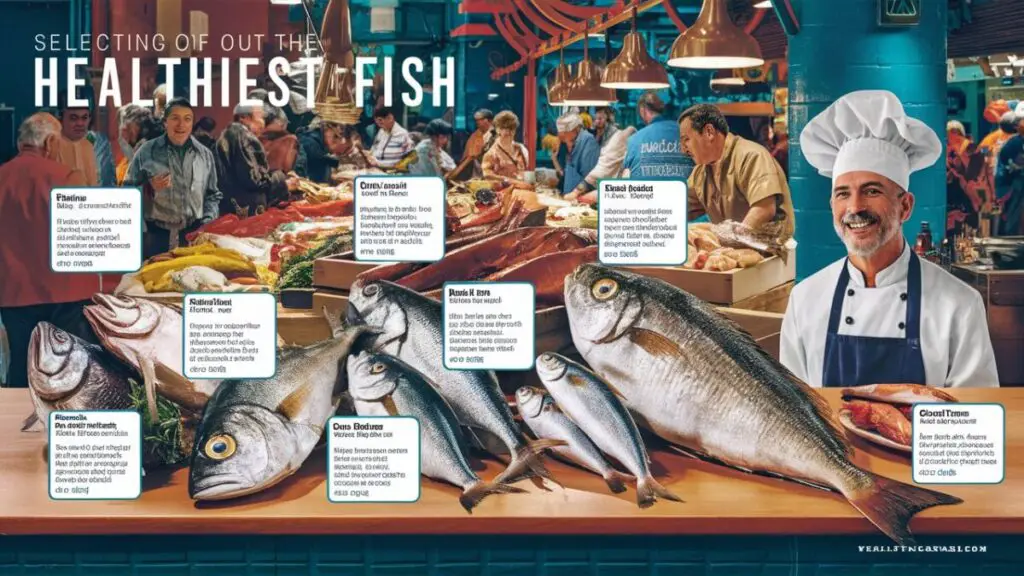
3. Factors to Consider When Choosing Fish
When selecting fish, there are several factors to consider to ensure you choose the healthiest options:
- Omega-3 Content: Opt for fish that are high in omega-3 fatty acids, such as salmon, mackerel, sardines, and trout. These fats are essential for heart and brain health.
- Mercury Levels: Some fish contain high concentrations of mercury, a hazardous chemical that can have negative health consequences, especially for expectant mothers, nursing mothers, and small children. Avoid or consume mercury-rich fish such as shark, swordfish, king mackerel, and tilefish in moderation. Alternatively, go for low-mercury choices such as light canned tuna, trout, sardines, and salmon.
- Sustainability: Think about how your seafood selections will affect the ecosystem. Choose responsibly supplied seafood to preserve the long-term fish supply and promote the health of ocean ecosystems. Seek accreditation from groups like the Aquaculture Stewardship Council (ASC) or the Marine Stewardship Council (MSC).
- Freshness and Quality: Fresh fish tastes better and keeps more nutrients, so wherever feasible, go for it. Look for clean eyes, lustrous skin, and a little scent of water when purchasing fresh fish. If fresh fish is unavailable, you can substitute it with frozen fish, which often freezes immediately after capturing, thereby preserving its nutritional value.
- Preparation Methods: The way you prepare fish can affect its nutritional value. Opt for healthier cooking methods such as baking, grilling, steaming, or poaching. Avoid deep-frying fish, as this can add unhealthy fats and calories.
Fish Cookbook for Beginners: Easy-to-Follow Recipes for Preparing and Cooking Delicious

4. Practical Tips for Incorporating Fish into Your Diet
Here are some practical tips to help you incorporate more fish into your diet:
- Plan Your Meals: Include fish in your weekly meal plan to ensure you consume it regularly. Aim for at least two servings of fish per week, as recommended by health organizations such as the American Heart Association.
- Try Different Recipes: Experiment with different fish recipes to keep your meals interesting and enjoyable. Try baking salmon with herbs and lemon, grilling mackerel with a spicy marinade, or making a hearty tuna salad.
- Add Fish to Your Favorite Dishes: Incorporate fish into dishes you already enjoy, such as adding grilled shrimp to your pasta, mixing sardines into your salads, or making fish tacos with cod or halibut.
- Use Fish as a Protein Source: Replace other protein sources, such as red meat or poultry, with fish in your meals. For example, make a fish burger instead of a beef burger or add fish to your stir-fry instead of chicken.
- Explore Different Types of Fish: Don’t limit yourself to just one type of fish. Try a variety of fish to get a wide range of nutrients and flavors. Explore different options like trout, haddock, sole, or flounder.

5. Addressing Concerns About Contaminants
Fish is very nutrient-dense; however, there are worries about toxins like polychlorinated biphenyls (PCBs) and mercury. To reduce your risk, consider the following advice:
- Choose Low-Mercury Fish: Opt for fish that are lower in mercury, such as salmon, sardines, trout, and mackerel. Avoid high-mercury fish like shark, swordfish, king mackerel, and tilefish.
- Limit Consumption of Certain Fish: If you consume fish high in mercury, limit your intake to once a week or less. Pregnant women, nursing mothers, and young children should be especially cautious.
- Check Local Advisories: Pay attention to local advisories about the safety of fish caught in local waters, especially if you’re fishing recreationally. Contaminant levels can vary depending on the location.
- Diversify Your Fish Choices: Eating a variety of fish can help minimize exposure to any single contaminant. Rotate different types of fish in your diet to reduce the risk.

6. Special Considerations for Pregnant Women and Young Children
Because it contains vital nutrients for growth and development, fish is a significant component of a balanced diet for young children and expectant mothers. But it’s crucial to pick the proper kinds of fish and eat them in the right proportions.
- Pregnant Women:
- Aim to consume 8-12 ounces (2-3 servings) of low-mercury fish per week.
- Avoid high-mercury fish such as shark, swordfish, king mackerel, and tilefish.
- Choose fish that are high in omega-3 fatty acids, such as salmon, sardines, and trout.
- Cook fish thoroughly to reduce the risk of foodborne illnesses.
- Young Children:
- Introduce fish to children gradually, starting with small amounts.
- Choose low-mercury fish and avoid high-mercury options.
- Ensure fish is cooked properly to prevent choking hazards and foodborne illnesses.
- Offer a variety of fish to provide a range of nutrients and prevent picky eating habits.
Viva Naturals Triple Strength Omega 3 Fish Oil Supplement – 2500 mg
How to Select the Healthiest Fish for You

7. Recipes and Meal Ideas
Here are some delicious and nutritious fish recipes to help you incorporate more fish into your diet:
- Baked Salmon with Herbs and Lemon:
- Ingredients: Salmon fillets, olive oil, lemon juice, garlic, fresh herbs (such as dill, parsley, or thyme), salt, and pepper.
- Instructions: Preheat the oven to 375°F (190°C). Place the salmon fillets on a baking sheet lined with parchment paper. Drizzle with olive oil and lemon juice. Sprinkle with minced garlic, fresh herbs, salt, and pepper. Bake for 15-20 minutes, or until the salmon is cooked through and flakes easily with a fork.
- Grilled Mackerel with Spicy Marinade:
- Ingredients: Mackerel fillets, olive oil, soy sauce, lime juice, garlic, ginger, chili flakes, and honey.
- Instructions: In a small bowl, whisk together olive oil, soy sauce, lime juice, minced garlic, grated ginger, chili flakes, and honey. Brush the marinade over the mackerel fillets and let them marinate for 30 minutes. Preheat the grill to medium-high heat. Grill the mackerel for 3-4 minutes per side, or until the fish is cooked through and has grill marks.
- Sardine Salad:
- Ingredients: Canned sardines, mixed greens, cherry tomatoes, cucumber, red onion, olives, feta cheese, olive oil, lemon juice, salt, and pepper.
- Instructions: Drain the canned sardines and break them into chunks. In a large bowl, combine mixed greens, halved cherry tomatoes, sliced cucumber, thinly sliced red onion, and olives. Top with sardine chunks and crumbled feta cheese. Drizzle with olive oil and lemon juice, and season with salt and pepper. Toss gently to combine.
- Tuna Pasta:
- Ingredients: Whole wheat pasta, canned tuna, olive oil, garlic, cherry tomatoes, spinach, lemon zest, Parmesan cheese, salt, and pepper.
- Instructions: Cook the pasta according to package instructions. In a large skillet, heat olive oil over medium heat. Add minced garlic and cook until fragrant. Add halved cherry tomatoes and cook until they start to soften. Stir in spinach and cook until wilted. Add drained canned tuna and cooked pasta to the skillet. Toss to combine and heat through. Sprinkle with lemon zest and grated Parmesan cheese. Season with salt and pepper to taste.
- Cod Fish Tacos:
- Ingredients: Cod fillets, olive oil, lime juice, chili powder, cumin, garlic powder, salt, corn tortillas, shredded cabbage, avocado, cilantro, and Greek yogurt.
- Instructions: Preheat the oven to 400°F (200°C). Place the cod fillets on a baking sheet lined with parchment paper. Drizzle with olive oil and lime juice. Sprinkle with chili powder, cumin, garlic powder, and salt. Bake for 10-12 minutes, or until the cod is cooked through and flakes easily with a fork. Warm the corn tortillas in a dry skillet. Fill each tortilla with shredded cabbage, flaked cod, sliced avocado, and chopped cilantro. Top with a dollop of Greek yogurt and a squeeze of lime juice.

8. Conclusion
Incorporating fish into your diet is one of the best things you can do for your health. You may reap a multitude of advantages by selecting the healthiest fish, including enhanced heart and brain health and improved skin and immune system performance.
When choosing fish, keep in mind aspects like freshness, sustainability, omega-3 content, and mercury levels.
Make fish a regular part of your meals by following these helpful suggestions and delectable dishes, and take advantage of the many health advantages it offers.
This nutritional advice and guide provides all the information you need to make informed decisions and take advantage of the numerous health benefits that fish has to offer, regardless of whether you’re a seafood fanatic or new to the world of fish.
So feel free to increase the amount of fish on your plate and enjoy the benefits it has for your overall health and wellbeing.
Hooked on Tech: Exploring the latest Fishing Gadgets that Anglers swear by.
In the realm of angling, where tradition and technology often converge, a new wave of fishing gadgets has emerged, transforming the way anglers approach their craft.
From advanced fish finders to smart bait systems, these innovations have not only revolutionized the fishing experience but have also garnered a loyal following among anglers worldwide.
2PCS Stainless Steel Fishing Pliers with Lanyard, HIA Needle Nose Pliers Fishing Hook Remover, Great for Saltwater and Freshwater
$9.99 (as of November 6, 2025 19:08 GMT +00:00 – More infoProduct prices and availability are accurate as of the date/time indicated and are subject to change. Any price and availability information displayed on [relevant Amazon Site(s), as applicable] at the time of purchase will apply to the purchase of this product.)KastKing AeroVice 7.5” Fishing Pliers, 420 Stainless Steel, Uni-Body Construction, Lightweight & Corrosion-Resistant, Multi-Function Jaws, Braid Cutters, Sheath, Lanyard & Carabiner
$13.59 (as of November 6, 2025 19:08 GMT +00:00 – More infoProduct prices and availability are accurate as of the date/time indicated and are subject to change. Any price and availability information displayed on [relevant Amazon Site(s), as applicable] at the time of purchase will apply to the purchase of this product.)PLUSINNO Floating Fishing Net for Steelhead, Salmon, Fly, Kayak, Catfish, Bass, Trout Fishing, Rubber Coated Landing Net for Easy Catch & Release, Compact & Foldable for Easy Transportation & Storage
$26.99 (as of November 7, 2025 01:11 GMT +00:00 – More infoProduct prices and availability are accurate as of the date/time indicated and are subject to change. Any price and availability information displayed on [relevant Amazon Site(s), as applicable] at the time of purchase will apply to the purchase of this product.)Ailiaili Fishing Rod Repair Kit – 3-IN-1 Fishing Pole Complete Supplies Kit for Rod Tips, Fishing Rod & Guide Eyelets Replacement, with Epoxy Glue, Wrapping Thread and Other Fishing Accessories & Gear
$15.99 (as of November 6, 2025 19:08 GMT +00:00 – More infoProduct prices and availability are accurate as of the date/time indicated and are subject to change. Any price and availability information displayed on [relevant Amazon Site(s), as applicable] at the time of purchase will apply to the purchase of this product.)KastKing Bully Wooly Convertible Mittens – Premium Wool Fingerless Fishing Gloves with Magnetic Flip-Top, Fleece Lining, Non-Slip Grip, Extra-Long Cuff, 4-Way Stretch, Cold Weather Winter Gear
$26.23 (as of November 6, 2025 19:08 GMT +00:00 – More infoProduct prices and availability are accurate as of the date/time indicated and are subject to change. Any price and availability information displayed on [relevant Amazon Site(s), as applicable] at the time of purchase will apply to the purchase of this product.)Berkley PowerBait MaxScent Flux-Gill
$9.99 (as of November 6, 2025 19:08 GMT +00:00 – More infoProduct prices and availability are accurate as of the date/time indicated and are subject to change. Any price and availability information displayed on [relevant Amazon Site(s), as applicable] at the time of purchase will apply to the purchase of this product.)WORKPRO 12V Cordless Electric Fillet Knife with 8” and 10” Razor-Sharp Blades, Cordless Fillet Knife with Non-slip Grip Handle and Safety Lock, 2 Rechargeable Battery Packs, 1 Quick Battery Charger, and 1 Storage Carry Case for Fishing, Filleting, Outdoors
$67.99 (as of November 7, 2025 01:11 GMT +00:00 – More infoProduct prices and availability are accurate as of the date/time indicated and are subject to change. Any price and availability information displayed on [relevant Amazon Site(s), as applicable] at the time of purchase will apply to the purchase of this product.)OTOEZ Fishing Net Cast Nets for Fishing 3Ft-8Ft Radius Saltwater Easy Throw Net Nylon/Tire Line 0.47/0.79 Inch Mesh Size for Bait Net Trap, with Sinker Aluminum Frisbee
Now retrieving the price.
(as of November 6, 2025 21:19 GMT +00:00 – More infoProduct prices and availability are accurate as of the date/time indicated and are subject to change. Any price and availability information displayed on [relevant Amazon Site(s), as applicable] at the time of purchase will apply to the purchase of this product.)
